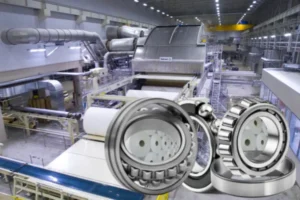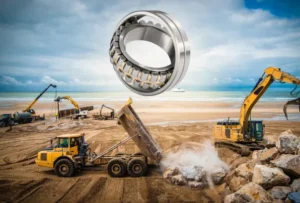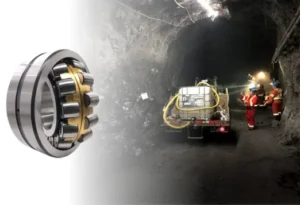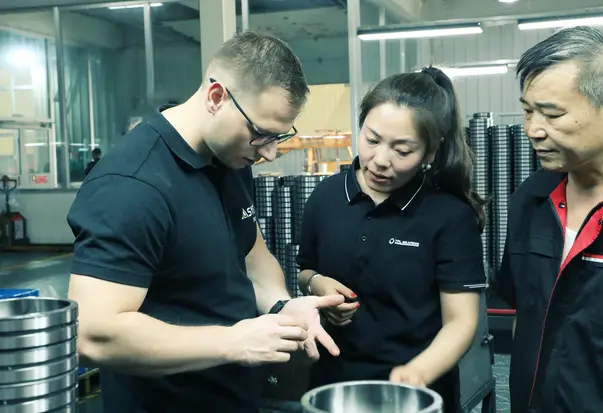Roller bearings need strong and dependable materials for every part. Makers use high-carbon chromium steel and carburized steel for rings and rollers. These steels are very strong, last long, and do not wear out fast. For cages, they pick steel, brass, or glass fiber reinforced nylon. The choice depends on what the bearing will do. Picking the right material is very important. It changes how well the bearing works and how long it lasts.
It also helps the bearing resist damage and rust. Keeping materials clean and using the right heat treatment makes bearings more reliable. This also lowers the chance of them breaking. Studies show that bearings made from cleaner, better steel can last over 50 times longer than normal ones. This proves that picking the right material is very important in tough jobs.
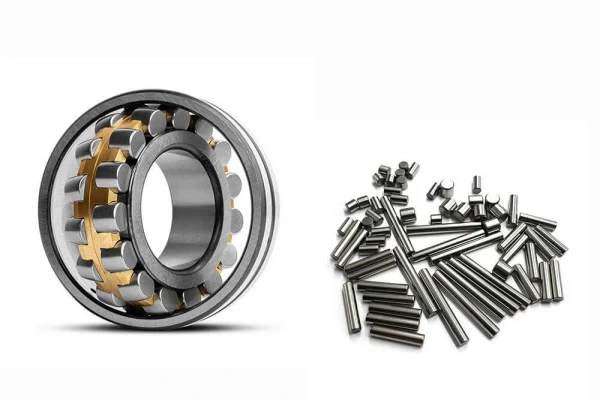
Key Takeaways
- Roller bearings are made from steel, ceramics, and plastics. Each material is picked for strength, speed, or being light. This helps them work in different machines.
- High-carbon chromium steel is used for rings and rollers. It is strong and hard. It lasts a long time under heavy weight.
- Ceramic parts make bearings lighter and faster. They also help with heat. Plastic cages lower friction and do not rust.
- Picking the right material depends on load, speed, and temperature. It also depends on the environment and cost. This helps bearings last longer and work better.
- Engineers use special tools to choose materials. They use stress tests and life equations. This stops wear and breaking. It saves money and time.
Overview of Roller Bearing Structure
Roller bearings are simple but very strong. Each part uses a special material for its job. There are three main types of bearing materials: steel alloys, ceramics, and plastics. These materials help bearings work in many machines.
- Steel alloys are used the most in roller bearings. Most rings and rolling parts are made from steel. Steel bearings are strong, hard, and last a long time. Makers make steel better by changing what is in it and heating it in special ways. Some steels, like M50 and Cronidur 30, are good for tough jobs. Steel bearings are picked a lot because they last and can hold heavy things.
- Ceramics are also used in roller bearings. Ceramics like silicon nitride, zirconia, and alumina are lighter than steel. They are very hard and do not wear out fast. Some bearings use steel rings and ceramic rolling parts. This makes them fast, light, and hard to wear out. Ceramics also stop electricity and work well when it is hot or fast.
- Plastics, like PEEK, are used for bearing cages. Plastics make bearings lighter and help them move smoothly. They do not rust and need little oil. Glass fiber reinforced nylon is a common plastic for cages.
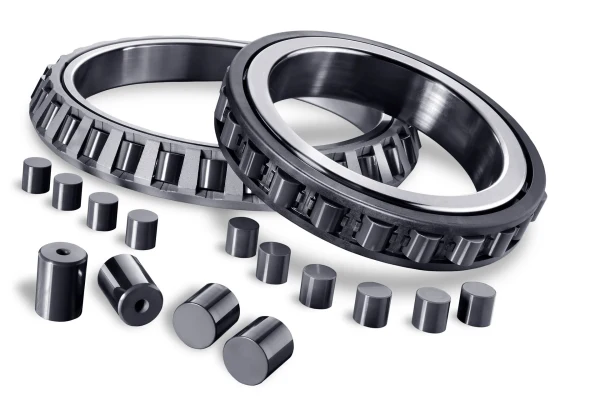
Each material has a job. Steel is strong and lasts long. Ceramics make bearings fast and hard to wear out. Plastics make them light and smooth. Makers pick materials based on how much weight, speed, heat, and where the bearing will be used. Studies show these choices help bearings last longer and work better. Now, many bearings use a mix of steel, ceramics, and plastics for the best results.
Common Materials Used in Roller Bearings
Bearing Rings and Rollers
Bearing rings and rollers are the main parts of roller bearings. The material picked for these parts affects how well the bearing works and how long it lasts. Most makers use high-carbon chromium steel for rings and rollers. This steel has about 1% carbon and 1.5% chromium. It is very strong and does not wear out fast. It also lasts a long time before breaking. GCr15 and 52100 chrome steel are two types often used. These steels are very hard and can hold heavy loads.
Carburized steel is another key material for bearings. It has a hard outside and a tough inside. This helps it resist both wear and shocks. Carburized steel bearings are good where there is a lot of impact or shaking. Stainless steel is used when the bearing needs to fight rust. It keeps the bearing safe from rust and strong chemicals. Tool steel is picked when extra strength or toughness is needed.
Note: Using the right heat treatment is very important. Heat treatment makes the bearing material harder and stronger. Special steps, like vacuum degassing and careful quenching, clean the steel and make its inside better. These steps help bearings last longer and not break as easily.
Makers also use surface texturing on bearing raceways. This helps lower friction, wear, and shaking, even if oil is low or dirt is present. Studies show that textured bearings last longer and keep working with dirt around. Hybrid roller bearings use ceramic rollers and steel rings. They resist wear better and have less friction when dirty. Using some ceramic rollers instead of steel can lower heat and help bearings last longer.
How well bearing rings and rollers work depends on some main things:
- Dynamic load rating (C): Shows how much moving weight the bearing can take.
- Fatigue load limit (Pu): Tells how much stress the bearing can take before breaking.
- Static load rating (C0): Shows how safe the bearing is with heavy, still loads.
These ratings depend on the bearing material, how it is made, and how smooth it is. Better heat treatment and making methods have made bearing materials stronger. For example:
- Tensile strength can go up by as much as 85%.
- Impact toughness can get better by 20.7% to 50.6%.
- Wear resistance can get over 55% better.
Precision grinding and hard turning help too. They make the surface smooth and add good stresses, which help bearings last longer. The table below shows how surface conditions change fatigue life:
| Parameter | Effect on Fatigue Life |
|---|---|
| Increase in inner ring roughness | Makes fatigue life drop a lot for all roller roughness values |
| Roller roughness | Sets the highest fatigue life for some values |
| Lubrication parameter (Λ) | Matches with fatigue life, showing how surface condition matters |
Bearing Cages
Bearing cages keep the rollers or balls apart and help them move right. The cage material must fit what the bearing will do. Steel cages are strong and do not wear out fast. They are good for heavy loads and fast speeds in factories. Stainless steel cages are used where there is a lot of rust or harsh places.
Brass cages move heat well and do not rust. They can bend and take shocks, so they are used in trains, ships, and big machines. Brass also stays strong when it gets hot.
Plastics like polyamide (nylon), PEEK, and PTFE are used for many cages. These plastics are light and have low friction. Polyamide 66 (PA66) and Polyamide 46 (PA46) let bearings spin fast and stop them from getting stuck. PEEK is good for clean or vacuum places and can take more heat. PTFE does not react with chemicals and is not magnetic, but it cannot hold as much weight.

Some cages use phenolic resin. This material is strong, light, and soaks up oil. It is great for very fast bearings. Sometimes, makers use ceramic cages for very hot or very exact jobs.
Tip: Steel cages with Diamond-Like Carbon (DLC) coatings wear out even slower and have less friction. This helps bearings last longer where there is a lot of shaking or not much oil.
Polymer cages lower friction and can work with little oil. They are good for fast and sensitive jobs. Nylon cages are often used in hybrid and electrical bearings. PEEK cages are best for very clean places with little dust. Brass cages are best for heavy and hot jobs, but not for very fast speeds.
Material Selection Criteria
Picking the right bearing material is very important. It helps bearings work well and last longer. Engineers think about many things before they choose a material. Each material has special features for different jobs.
- Mechanical properties are very important. A good bearing material must be strong and hard. It should not wear out fast. These things help steel bearings hold heavy loads. They also help bearings work under pressure. Shock resistance is needed too. Some materials, like case-hardened steel, have a tough inside and a hard outside. This helps them take hits without breaking.
- Speed and heat matter a lot. Fast machines need bearings that can handle heat and friction. Ceramics are good for high-speed bearings. They do not get hot easily and are lighter than steel. The right material keeps bearings from wearing out when hot.
- The place where the bearing works is important. Some bearings work in wet or dirty places. Stainless steel and special alloys fight rust and chemicals. Food and medical machines need clean and safe bearing materials.
- Lubrication and sealing are important too. Some materials work better with certain oils or greases. Good seals and the right material keep dirt out and oil in.
- Cost and how well it works must be balanced. Special coatings and shapes can make bearings last longer. These things may cost more at first. But they save money later by stopping repairs.
Tip: Engineers use math to guess how long a bearing will last. They look at load, speed, and the bearing material. The L10 formula helps them see how changes affect bearing life.
A table can help compare important things:
| Criteria | Why It Matters |
|---|---|
| High strength | Lets bearings carry heavy loads |
| Hardness | Stops wear and surface damage |
| Shock resistance | Protects against sudden impacts |
| Heat resistance | Keeps bearings safe at high speeds |
| Corrosion resistance | Fights rust in tough environments |
| Cost-performance | Balances price with long-term value |
Engineers pick the best material for each job. They check if it can handle the load, speed, and place. This careful work helps bearings last longer and work better in all machines.
Comparison Table: Material Properties at a Glance
Picking the right bearing material helps machines work better and last longer. Each bearing material has its own good points. Some are best for heavy things. Others are better for fast or rough places. The best choice depends on what the bearing needs to do.
Engineers think about a few main things:
- Load: How much weight the bearing holds.
- Speed: How fast the bearing spins.
- Temperature: How hot the bearing gets.
- Environment: If there is water, dust, or chemicals.
- Cost: How much the material costs and how long it lasts.
Tip: Always pick the bearing material for the job. Big machines need strong materials. Fast machines need materials that stay cool and smooth.
The table below shows how different bearings work in different situations:
| Bearing Type | Load Capacity | Speed Capability | Heat Generation & Environmental Impact |
|---|---|---|---|
| Ball Bearings | Not great for heavy loads; can break early if too much weight | Can spin very fast | Lose heat well and have less friction because of point contact |
| Roller Bearings | Can hold more weight because of line contact | Cannot spin as fast because of more friction | Make more heat from bigger contact area, so speed is lower |
When you pick a bearing material, think about what the job needs. For example:
- Use high-carbon chromium steel for heavy things and long life.
- Pick stainless steel if there is water or chemicals.
- Choose ceramics for fast or hot jobs.
- Use polymer cages for light weight and less friction.
Different materials help bearings last longer in different places. A good bearing material can save money by stopping repairs and machine stops. Always check what the machine needs before picking the bearing material.
Industry Applications and Recommended Materials
Different industries need special bearings for their work. Each industry wants bearings with certain features. Some want strength. Others want bearings that do not rust. Some need bearings that work in high heat. The right material helps bearings last longer and work better.
Industries like these bearing materials:
- Aerospace and automotive companies use engineered composites. These materials are light. They can make their own oil. This helps cars and planes go faster. It also means they need less fixing.
- Heavy machines use steel or ceramics for bearings. These materials are strong. They can hold heavy things and keep working when stressed.
- Food factories need bearings that do not rust. They also need bearings without bad chemicals. Stainless steel and special plastics are good for these clean places.
- Construction machines use engineered composites. These materials are light and strong. This makes the machines easier to move.
Many industries use bearings in different ways:
- Car wheel hubs use tapered roller bearings. These can take side and up-and-down forces. Double-row types are even stronger.
- Heavy machines use spherical roller thrust bearings. These bearings can line up by themselves. They also carry heavy loads.
- Car transmissions use needle roller bearings. These fit in small spaces. They still hold a lot of weight.
- Robots and automation need smooth and accurate bearings.
- Power plants use many kinds of bearings in turbines, pumps, and compressors.
- Wastewater plants use ceramic bearings. These do not rust from water or chemicals.
The table below shows some industries and their best bearing materials:
| Industry | Recommended Bearing Material |
|---|---|
| Aerospace/Automotive | Engineered composites, steel |
| Heavy Machinery | Steel, ceramics |
| Food Processing | Stainless steel, plastics |
| Construction | Engineered composites |
| Wastewater Treatment | Ceramics |
Tip: Always pick the right bearing material for the job. This helps machines last longer and break less.
Tips for Choosing the Right Bearing Material
Picking the best material for a roller bearing helps machines last longer. Engineers think about many things before they choose. Here are some easy tips:
- Know the Load and Speed
Heavy loads need strong materials like high-carbon chromium steel. Fast parts work better with ceramics or special steels. - Check the Working Environment
Wet or dirty places need stainless steel or corrosion-resistant materials. Clean rooms or food factories use plastics or special coatings. - Think About Temperature
High heat can hurt some materials. High-temperature steels or ceramics stay strong when it gets hot. - Use Simulation Tools
Engineers use computer programs like Abaqus and ANSYS to test stress. These tools show where the most pressure is inside the bearing. They help pick materials that will not crack or wear out fast. - Look at Bearing Life Equations
The L10 equation helps guess how long a bearing will last. It uses numbers like dynamic load rating (C) and the load the bearing will carry (P). A higher C value means the bearing can last longer with heavy use. - Check Race Thickness and Stress
Thin races can bend or break more easily. Engineers use stress values to see if a thicker or stronger material is needed. - Balance Cost and Performance
Some materials cost more but last longer. Picking the right balance saves money over time.
Tip: Always match the bearing material to the job. Using the right tools and numbers helps make the best choice.
| Guide / Metric | What It Shows | Why It Matters |
|---|---|---|
| FEA (Abaqus, ANSYS) | Stress and bending in bearings | Finds weak spots in materials |
| Contact Stress Values | Pressure at bearing contact points | Helps avoid cracks and damage |
| L10 Life Equation | How long the bearing should last | Picks materials for long use |
Choosing the right material helps machines work well and stay safe.
Picking the right bearing material helps roller bearings last longer. It also makes them work better. Different materials help companies save money and stop machines from breaking.
- Chrome steel bearings can hold heavy things. They are not too expensive for many jobs.
- Hybrid bearings use ceramic parts. They can last up to eight times longer than steel ones.
It is not always easy to pick the best material. Bearings can break if the wrong material is used. TFL Bearings has experts who help choose the right material for each job. If you need more help, they say you should contact them for a special answer.
FAQ
What is the most common material for roller bearing rings and rollers?
High-carbon chromium steel is used the most. It is very strong and does not wear out fast. This steel helps roller bearings last a long time in many machines.
Why do some roller bearings use ceramic materials?
Ceramic materials, like silicon nitride, make bearings lighter and harder. They can handle heat and do not wear out quickly. These materials are good for fast or hot machines.
How does the environment affect bearing material choice?
Wet or dirty places need materials that do not rust. Stainless steel and special plastics help bearings last longer in these places. Clean rooms often use plastic cages to help bearings work better.
What is the role of the bearing cage?
The cage keeps rollers or balls apart. It helps guide them and lowers friction. Cages can be made from steel, brass, or plastics, based on what the bearing needs to do.
Can roller bearings be used instead of ball bearings?
Engineers pick roller bearings for heavy loads. Ball bearings are better for lighter loads and faster speeds. The choice depends on what the machine needs.
